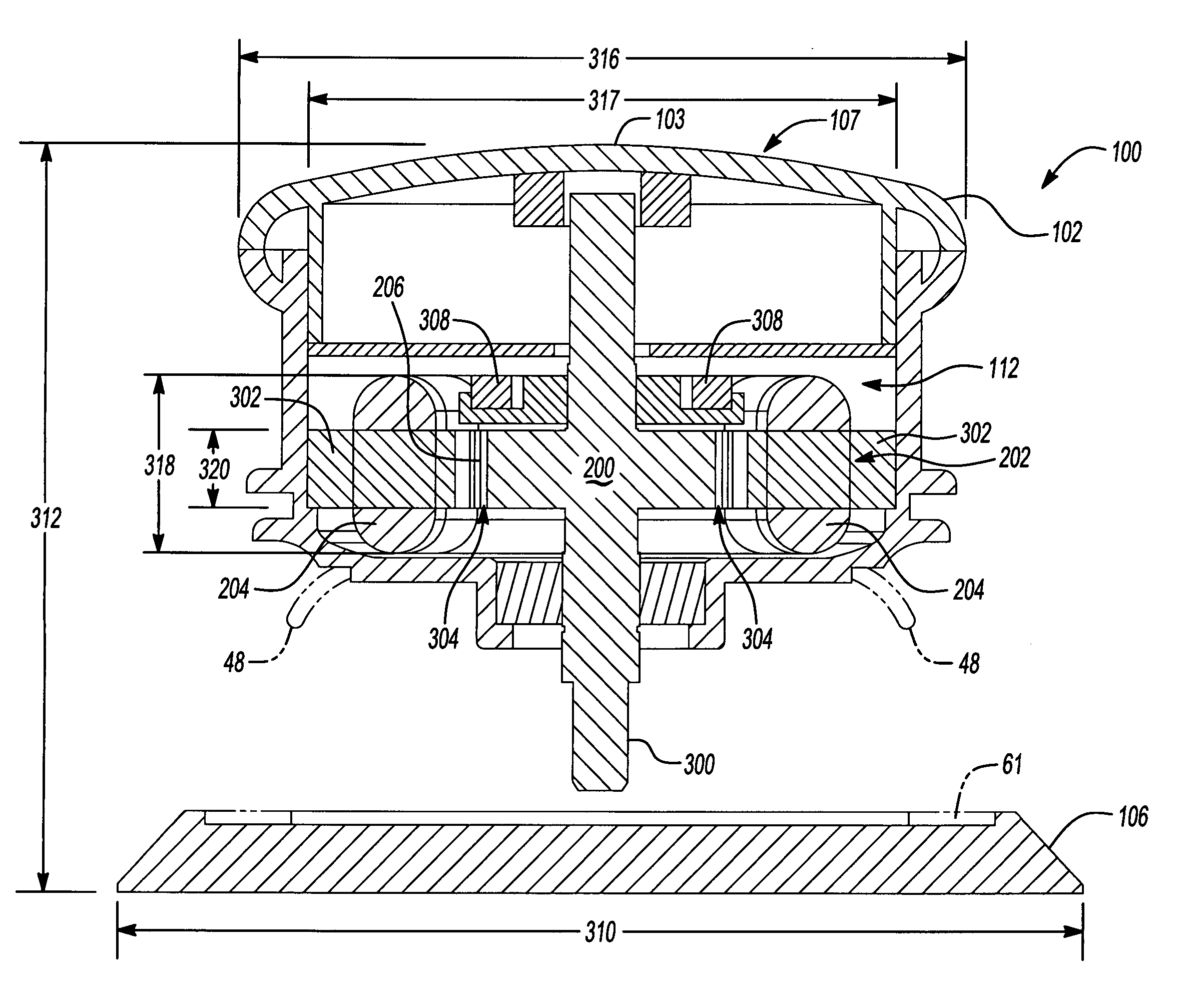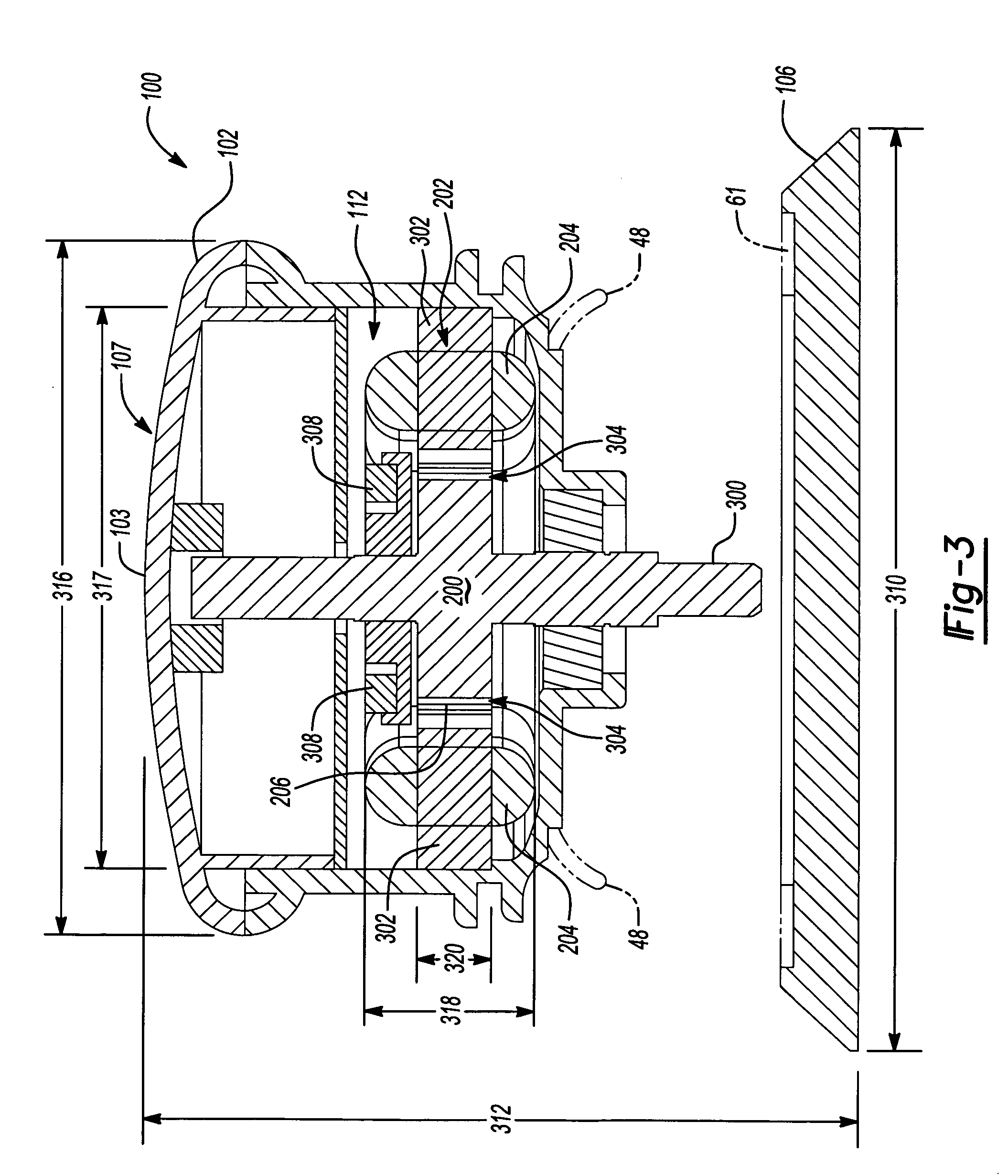Electric sander and motor control therefor
a technology of electric sanders and motors, which is applied in the field of random orbital sanders and orbital sanders, can solve the problems of sanders b>10/b> to jump, undesirable gouges or scratches on the work surface, and and achieve the effect of reducing the height of the sander
- Summary
- Abstract
- Description
- Claims
- Application Information
AI Technical Summary
Benefits of technology
Problems solved by technology
Method used
Image
Examples
Embodiment Construction
[0036] The following description of the preferred embodiment(s) is merely exemplary in nature and is in no way intended to limit the invention, its application, or uses.
[0037] Referring to FIGS. 1-3, a low profile power tool 100 is shown. Low profile power tool 100 will be described in the context of a random orbital sander and will be referred to as sander 100, but it should be understood that it can be other types of power tools where holding the power tool near where it contacts the work piece would be advantageous, such as orbital sanders (which are sometimes known as “quarter sheet” sanders”).
[0038] Sander 100 includes a housing 102 and an orbit mechanism 104 disposed beneath housing 102. A dust canister 106 may illustratively be removably secured to housing 102. Orbit mechanism 104 and dust canister 106 may illustratively be conventional orbit mechanisms and dust canisters that have been used on prior art orbital sanders, such as disclosed in the above referenced U.S. Pat. N...
PUM
 Login to View More
Login to View More Abstract
Description
Claims
Application Information
 Login to View More
Login to View More - R&D
- Intellectual Property
- Life Sciences
- Materials
- Tech Scout
- Unparalleled Data Quality
- Higher Quality Content
- 60% Fewer Hallucinations
Browse by: Latest US Patents, China's latest patents, Technical Efficacy Thesaurus, Application Domain, Technology Topic, Popular Technical Reports.
© 2025 PatSnap. All rights reserved.Legal|Privacy policy|Modern Slavery Act Transparency Statement|Sitemap|About US| Contact US: help@patsnap.com



